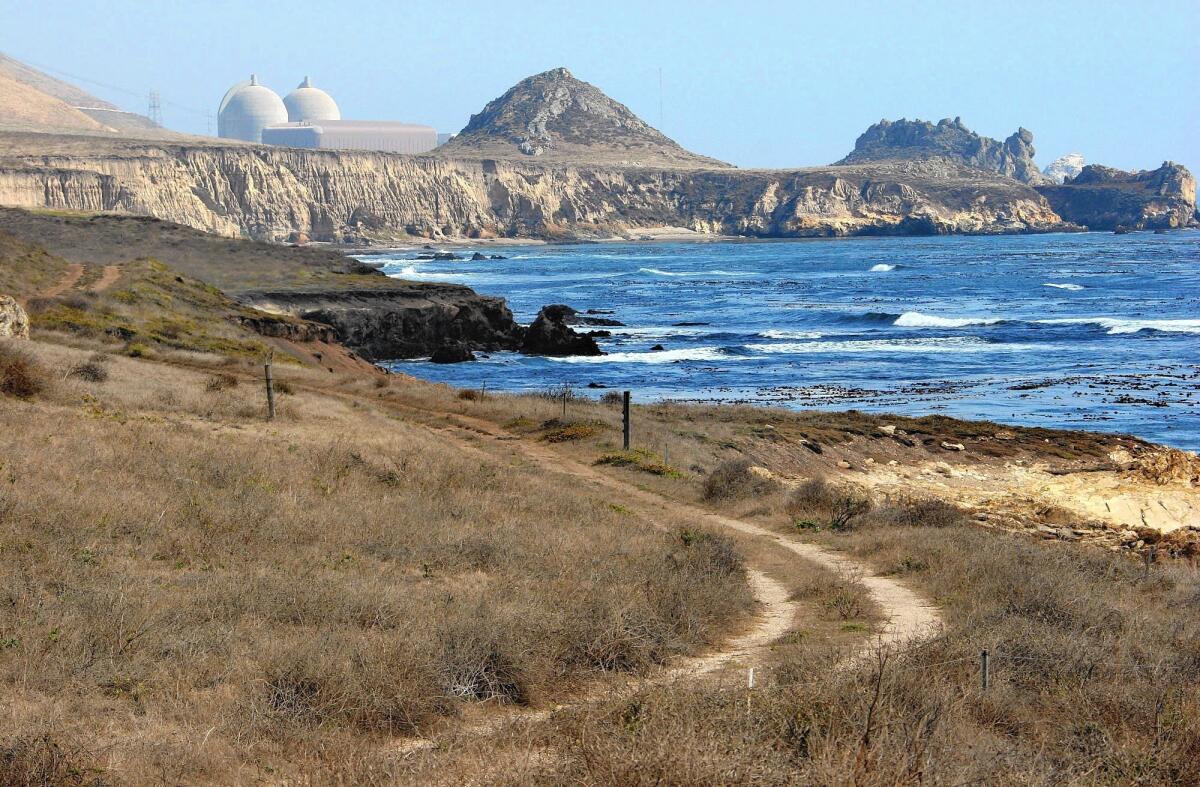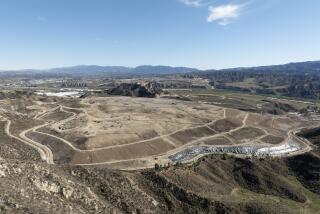It’ll take time — and $3.8 billion — to shut down the Diablo Canyon nuclear power plant

- Share via
Decommissioning a nuclear power plant is a long and expensive process that sometimes takes more money than originally expected.
But executives running the Diablo Canyon nuclear facility, who announced Tuesday that the site’s two reactors will be shut down by the middle of the next decade, expressed confidence that they can do it quickly and without running up the tab.
“The basic design is, by the time you get to the licensing end of the plant’s life, you’ve collected enough to decommission the plant,” said Tony Earley, chairman and chief executive of Pacific Gas & Electric, the investor-owned utility that runs Diablo Canyon, in a conference call with reporters.
As required by California law, PG&E has established a trust fund created by ratepayers, through their electricity bills over the course of decades, to cover decommissioning costs.
According to a document filed with the Securities and Exchange Commission on Tuesday, the trust fund for Diablo Canyon is nearly $2.8 billion. That’s about $1 billion shy of meeting the costs to shut down the plant.
In PG&E’s most recent submission to the California Public Utilities Commission, the utility estimated it would cost $3.779 billion to decommission Diablo Canyon.
“The beauty of this agreement is that it gives us almost a decade to work through these issues,” Earley said. “We’re not scrambling around like other nuclear plants who shut down their plants unexpectedly, trying to pull together these numbers.”

Wall Street investors appeared to like what they heard. The stock price for the San Francisco utility’s parent company, PG&E Corp., dropped on the announcement but recovered during the day to close at $62.63 a share, up 6 cents, or less than 1%.
In 2014 Southern California Edison estimated decommissioning costs at the San Onofre Nuclear Generating Station at $4.4 billion. The facility was formally shut down in 2013, but the reactors had already been idled for months because premature wear in new generators allowed a small amount of radioactive steam to be released.
Edison customers ended up getting billed for $3.3 billion leftover plant costs — which has drawn harsh criticism. Last month, the utilities commission decided to take a second look at the settlement’s details after it was revealed that in 2013 then-commission President Michael Peevey and an SCE executive met secretly to sketch out an agreement.
A major issue involved with decommissioned nuclear plants is what to do with spent fuel.
Diablo Canyon has a storage facility on site to handle spent fuel in dry casks.
“There is enough space to store all the fuel that will be generated during the current operating licenses,” said Blair Jones, spokesman for PG&E.
The used uranium pellets at Diablo Canyon have a combined weight of 1,356 metric tons, or 2.98 million pounds.
Diablo Canyon’s spent fuel will remain on site because, as in the case with all nuclear facilities including San Onofre, it is the federal government’s responsibility to ultimately find places to deposit nuclear waste.
With the proposed depository at Yucca Mountain in Nevada scrapped, many nuclear facilities have had to keep spent fuel at their respective sites.
“Our position is that the federal government made a commitment to establish a repository solution for the country,” Jones said. “And we believe it’s important they fulfill that commitment. In the meantime, we will continue to safely store the fuel on site as we always have.”
At San Onofre, Edison wants to store its spent fuel rods in sealed stainless steel canisters, encased in concrete and partially buried on the plant’s property.
Activists have sued to reverse the Coastal Commission’s approval of Edison’s plan, preferring that the fuel be shipped via truck to the Palo Verde nuclear plant in Tonopah, Ariz., in which Edison has a minority stake. But the Arizona facility, under its license from the U.S. Nuclear Regulatory Commission, is allowed to store only its own spent fuel, which remains radioactive for centuries.
Decommissioning is a long process, which requires facilities working in conjunction with the Nuclear Regulatory Commission to file reports, submit reviews and go through federal oversight to get a license terminated.
“It’s not a quick thing,” said Murray Jennex, utilities expert and professor of management information systems at San Diego State. “You have to be down a while to let contaminated areas decay to a safe level. Then you have to take apart buildings designed to be very, very strong. You have lots of debris and you have to dispose of that.... It’s about a 10-year process, at least.”
Earley told reporters Tuesday he’s optimistic the Diablo Canyon shutdown will go smoothly.
“We can do it thoughtfully, we can learn from what other plants are doing and I think in the end that will benefit everybody,” he said.
RELATED:
PG&E to close Diablo Canyon, California’s last nuclear power plant
From the Archives: Diablo Canyon nuclear plant could be at fault in a disaster
More to Read
Inside the business of entertainment
The Wide Shot brings you news, analysis and insights on everything from streaming wars to production — and what it all means for the future.
You may occasionally receive promotional content from the Los Angeles Times.










